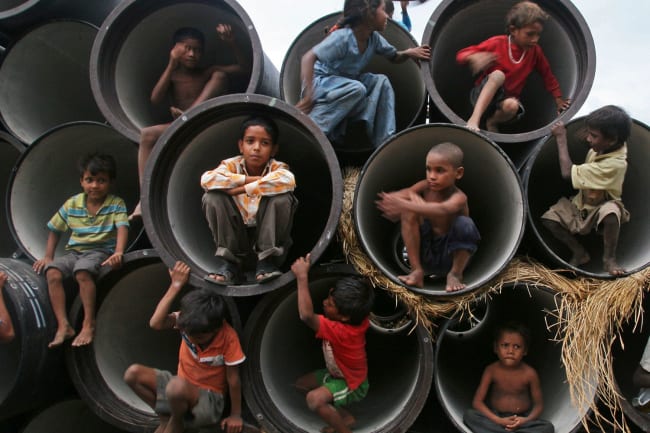Transmission of COVID-19 is rapidly increasing as the holiday season approaches. The Institute for Health Metrics and Evaluation (IHME) estimates that U.S. COVID-19 deaths could nearly double by March 1, 2021, reaching more than 430,000 deaths. As a result, many people in the United States are reconsidering or canceling their plans to gather with family and friends over the holidays. For Kristine Rooke of Kirkland, Washington, who was interviewed by KIRO 7, the need to protect her mother from COVID-19 motivated her family to cancel their Thanksgiving gathering. "As much as we love our family, I think we all are in agreement, Mom comes first," she said. "Mom is extremely grateful but she's also extremely sad because she's older. And she said to me the other day, 'I just don't know how many other Thanksgivings I'm going to have.'"
For many, the risk of losing a loved one to COVID-19 outweighs the desire to gather
Like Rooke, for many, the risk of losing a loved one to COVID-19 outweighs the desire to gather. Avoiding COVID-19 needs to be a primary focus during the fall and winter months. If we can make it through this holiday season alive and healthy, we can gather again once vaccines are widespread. While it is good news that one vaccine candidate has been shown to be effective in tests, we cannot forget that widespread vaccination will not be available until spring 2021 at the earliest. Until vaccination is a reality, it is safest to avoid in-person gatherings to save lives.
At the same time, making the decision to cancel in-person gatherings over the holidays can be heart-wrenching, especially after enduring so many months of physical distancing. Also, as the pandemic drags on, the isolation that comes with quarantining and social distancing appears to be having a profoundly negative impact on people's mental health.
If you absolutely must gather with people from outside your immediate household, it is vital to assess the risk and take steps to keep yourself and others safe. In combination with guidance from your state and local health department and the U.S. Centers for Disease Control and Prevention (CDC), IHME provides resources that can be helpful for your decision-making.

Assessing: How Fast Is the Virus Spreading?
The CDC lists a variety of factors that increase the risk of spreading COVID-19 during small gatherings. One of these factors includes having high levels of COVID-19 in your community. Another one is rapid spread of COVID-19 in the community where people are gathering, which increases the risk of transmission. The risk of COVID-19 transmission also increases when people are traveling from areas with elevated transmission of COVID-19.
One of the best ways to assess transmission in your location, or the location that your guests will be traveling from, is the effective reproduction rate. Your chance of getting COVID-19 is highest in states where the effective reproduction rate is one or higher, which indicates that cases are rising in your area. A value below one means that transmission is declining. Currently, according to IHME, twenty-three states in the United States have effective reproduction rates of one or higher. Based on the most recent effective reproduction rates available, you would be less likely to get infected at a holiday gathering in California, South Carolina, or Virginia compared to a gathering in a state such as New York, Arizona, Nevada, or Colorado.
Transmission of COVID-19
Effective Reproduction Rate of COVID-19 on October 29, 2020
Is Anyone in Your Group at High Risk for Severe COVID-19 Infection?
The risk of dying from COVID-19 increases with age, with the greatest risk being among those sixty-years and older, as indicated by the percentage of deaths that have occurred in each age group. If someone in your household or in the group that you'll be gathering with is in a high-risk age group, strongly consider rescheduling your in-person gathering or holding it virtually.
Percentage of Cumulative Deaths by Age Group
Quarantine and Testing
If possible, isolate for fourteen days before gathering with others to reduce the risk of infection, arriving fourteen days early at your destination if you travel by plane. If you can't quarantine, each guest at the event should test negative for COVID-19 before gathering. You should postpone or cancel your event if you or any of your guests develop symptoms during the quarantine period or test positive for COVID-19.
If 95 percent of people in the United States wore a mask in public, an estimated 68,000 lives could be saved by 2021
Masks Reduce the Risk
If you gather with people outside of your household over the holidays, you can reduce your risk of getting infected with COVID-19 or transmitting it to others by wearing a mask. If 95 percent of people in the United States wore a mask in public, including when they are interacting with people from outside their households, IHME estimates that more than sixty-eight thousand lives could be saved by March 1, 2021. While more Americans are wearing masks than ever before, with mask-usage increasing from a low of 3 percent in April to a high of 68 percent in November 2020, survey data show that people tend to let down their guard when socializing with others. According to data from the Facebook United States Symptoms Survey, Americans are more likely to wear masks when shopping for groceries, going to work, or riding public transportation than when they are gathering with people from outside their households. We have an opportunity to save lives by staying vigilant and masking whenever we are around people with whom we do not live.
U.S. Mask-Usage by Activity
Americans who wore a mask during the following activities outside their homes in the last 24 hours
Limiting Contact as We Await Widespread Vaccination
As COVID-19 infections surge during the upcoming fall and winter months, we must all work together to prevent transmission and save lives while we wait for vaccines to become widely available. Avoiding in-person gatherings is the safest route to go this holiday season, and we should hold our gatherings virtually or postpone them for spring or summer 2021. If you do choose to gather in person with people from outside your household, it is vital to evaluate the risk of infection and take precautions such as masking, physical distancing, and hand-washing.

EDITOR'S NOTE: The authors are employed by the University of Washington's Institute for Health Metrics and Evaluation (IHME), which produced the COVID-19 forecasts described in this article. IHME collaborates with the Council on Foreign Relations on Think Global Health. All statements and views expressed in this article are solely those of the individual authors and are not necessarily shared by their institution.












